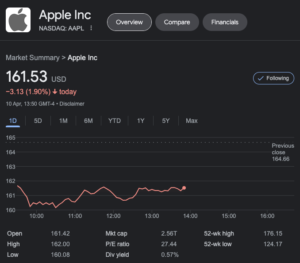
On 1 January 2024, Will Clemente III shared on social media platform X (formerly known as Twitter) a theoretical concern he has about the new spot Bitcoin ETFs that everyone in the crypto expects to get approved by the U.S. SEC early this year.
Clemente is known for his role as a prominent analyst in the cryptocurrency space, particularly focusing on Bitcoin. He gained recognition for his deep-dive analyses and insights into Bitcoin’s on-chain metrics, market trends, and investor behavior. Clemente’s work often involves examining data from the blockchain to understand and predict market movements, investor sentiment, and potential future trends in the cryptocurrency market.
He is particularly popular among crypto enthusiasts for his ability to break down complex data into more understandable insights, making on-chain analysis more accessible to a broader audience. Clemente frequently shares his analyses and thoughts through various platforms, including social media channels like Twitter, where he has a significant following, and through appearances on cryptocurrency-focused podcasts and interviews.
Clemente’s initial post on X presented a hypothetical scenario. He suggested that if the U.S. government aimed to accumulate a significant amount of Bitcoin, it might encourage the public and firms to hold their Bitcoin in regulated, centralized custodians or spot ETFs. Following this, the U.S. president could theoretically issue an executive order to acquire all this Bitcoin, similar to the 1933 order that mandated every individual and organization based in the U.S. to surrender their physical gold. This strategy, he implied, would allow the government to acquire Bitcoin without causing market slippage.
Responding to queries about the feasibility of such an action in today’s digital and socially connected world, Clemente speculated that the government could preemptively freeze assets on custodians/exchanges before making any official announcement. Clemente also acknowledged the potential for leaks of such a government plan, noting that it could lead to prison time for the leakers and that the timing of the government’s action could render such leaks ineffective, especially for spot ETF shareholders.
It is also worth noting that Clemente emphasized the importance of holding one’s own private keys in the cryptocurrency space, reiterating the community’s mantra of “not your keys, not your coins.”
<!–
–> <!–
–>
For those who might not be familiar with this bit of U.S. history, Executive Order 6102 was a significant U.S. legislation signed by President Franklin D. Roosevelt on 5 April 1933 as part of his strategy to combat the Great Depression. The order’s primary aim was to increase the U.S. government’s gold reserves, which were necessary to create more currency and stimulate economic growth.
The order forbade the hoarding of gold coins, gold bullion, and gold certificates within the continental United States. It required individuals, partnerships, associations, and corporations to surrender their gold holdings to the Federal Reserve. In return, they were compensated at a rate of $20.67 per ounce. There were exemptions for certain types of gold, including gold coins of recognized collector’s value, gold used in industry, and gold held under a specific license.
The legal basis for Executive Order 6102 was the Trading with the Enemy Act of 1917. This act gave the President the power to oversee transactions in times of national emergency. In 1933, the U.S. was in the midst of the Great Depression, which was considered a sufficient emergency to warrant such measures.
The effect of Executive Order 6102 on U.S. persons (i.e., all U.S.-based entities) who held physical gold was significant. Many Americans who had stored gold as a hedge against inflation or as a part of their savings found themselves compelled to surrender their gold to the government. This move was controversial as it forced citizens to part with their gold at a fixed price, which many considered below the market value. The order essentially criminalized the possession of significant amounts of gold, leading to penalties for non-compliance, including fines and imprisonment.
The order played a crucial role in the U.S. government’s efforts to move away from the gold standard and towards a fiat currency system. By increasing the government’s gold reserves, it allowed for greater control over the monetary system and helped in the economic recovery efforts during the Great Depression. However, it also marked a dramatic shift in the U.S. government’s approach to private asset ownership and had a lasting impact on the way Americans viewed the security of their assets.
Featured Image via Pixabay
- SEO Powered Content & PR Distribution. Get Amplified Today.
- PlatoData.Network Vertical Generative Ai. Empower Yourself. Access Here.
- PlatoAiStream. Web3 Intelligence. Knowledge Amplified. Access Here.
- PlatoESG. Carbon, CleanTech, Energy, Environment, Solar, Waste Management. Access Here.
- PlatoHealth. Biotech and Clinical Trials Intelligence. Access Here.
- Source: https://www.cryptoglobe.com/latest/2024/01/speculative-theory-or-credible-threat-crypto-analyst-says-u-s-government-could-theoretically-seize-all-bitcoins-held-by-spot-bitcoin-etfs/
- :has
- :is
- :not
- :where
- 1
- 1933
- 2024
- 67
- 7
- a
- ability
- About
- accessible
- Accumulate
- acknowledged
- acquire
- Act
- Action
- Ads
- against
- aim
- aimed
- All
- allow
- allowed
- also
- Americans
- among
- amount
- amounts
- an
- Analyses
- analysis
- analyst
- and
- Announcement
- any
- appearances
- approach
- approved
- April
- ARE
- AS
- asset
- Assets
- associations
- At
- audience
- away
- based
- basis
- BE
- before
- behavior
- below
- Bit
- Bitcoin
- Bitcoins
- blockchain
- Break
- broader
- BTC
- bullion
- by
- causing
- centralized
- certain
- certificates
- channels
- Citizens
- Coins
- combat
- compelled
- compensated
- complex
- Concern
- connected
- considered
- control
- controversial
- Corporations
- could
- create
- crucial
- crypto
- crypto enthusiasts
- cryptocurrency
- cryptocurrency market
- CryptoGlobe
- Currency
- custodians
- data
- depression
- digital
- down
- dramatic
- during
- e
- Early
- Economic
- Economic growth
- effect
- efforts
- emergency
- emphasized
- encourage
- enthusiasts
- entities
- especially
- essentially
- ETF
- ETFs
- Every
- everyone
- Examining
- executive
- executive order
- expects
- familiar
- feasibility
- Federal
- federal reserve
- Fiat
- Fiat currency
- fines
- firms
- fixed
- focusing
- foil
- following
- For
- forced
- formerly
- found
- franklin
- Freeze
- frequently
- from
- future
- gained
- gave
- get
- Gold
- gold bullion
- Gold Standard
- Government
- government seizure
- Govt
- great
- greater
- Growth
- had
- hat
- he
- hedge
- Held
- helped
- his
- history
- hold
- holding
- Holdings
- How
- However
- HTTPS
- i
- if
- iii
- image
- Impact
- implied
- importance
- in
- Including
- Increase
- increasing
- individual
- individuals
- industry
- inflation
- initial
- insights
- Interviews
- into
- investor
- investor sentiment
- issue
- IT
- January
- jpg
- keys
- known
- lasting
- lead
- leading
- Leaks
- Legal
- Legislation
- License
- like
- Making
- Mantra
- many
- marked
- Market
- Market Trends
- market value
- measures
- Media
- Metrics
- might
- Monetary
- more
- move
- movements
- much
- National
- necessary
- New
- no
- noting
- of
- official
- often
- on
- On-Chain
- On-chain analysis
- or
- order
- organization
- over
- oversee
- own
- ownership
- part
- particularly
- partnerships
- per
- persons
- physical
- plan
- platform
- Platforms
- plato
- Plato Data Intelligence
- PlatoData
- played
- Podcasts
- Popular
- possession
- possible
- Post
- potential
- power
- predict
- predict market
- presented
- president
- price
- primary
- prison
- private
- Private Keys
- prominent
- public
- queries
- Rate
- recognition
- recognized
- recovery
- regulated
- reiterating
- render
- required
- Reserve
- reserves
- return
- Role
- s
- safe
- Savings
- scenario
- Screen
- screens
- SEC
- security
- Seizure
- sentiment
- shared
- Shareholders
- Shares
- shift
- signed
- significant
- similar
- sizes
- slippage
- Social
- social media
- socially
- Space
- specific
- Spot
- spot etf
- standard
- States
- stimulate
- stored
- Strategy
- such
- sufficient
- system
- that
- The
- their
- themselves
- then
- theoretical
- There.
- they
- this
- this year
- those
- Through
- time
- times
- timing
- to
- today’s
- towards
- Trading
- Transactions
- Trends
- true
- types
- u.s.
- U.S. government
- U.S. SEC
- under
- understand
- understandable
- United
- United States
- us
- use
- used
- value
- various
- via
- wanted
- Warrant
- was
- Way..
- were
- which
- WHO
- will
- Will Clemente
- with
- within
- without
- Work
- world
- worth
- would
- X
- year
- Your
- zephyrnet













